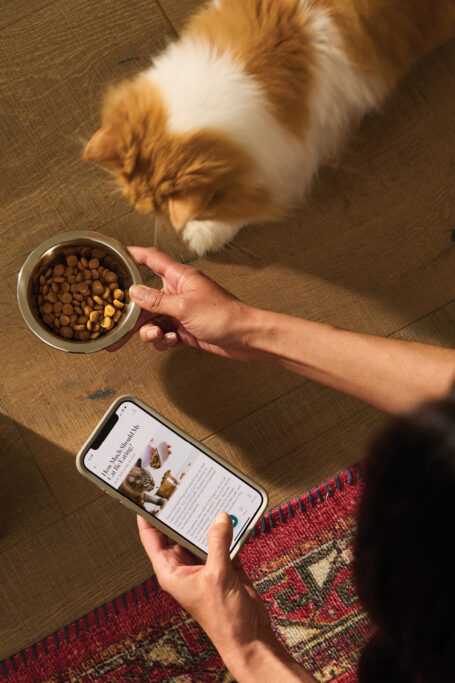From Small Talk to Business Talk
It’s an unavoidable reality that relationships are the currency of business, and building such meaningful connections requires maximizing casual interactions.
However, knowing how to do so isn’t always easy. We’ve likely all had exchanges during meet and greets with potential clients, after-work happy hours, or even just those few minutes before a meeting where the dialogue was polite but lacked substance or you struggled to find common ground. As a result, you probably walked away feeling like the discussion when absolutely nowhere.
The FORD method offers a solution to help you move beyond small talk to more satisfying discussions. By focusing on the areas of family, occupation, recreation, and dreams, you can converse more easily with others and better lay the foundation for lasting bonds that benefit both your professional life and your business.
A closer look
The beauty of the FORD method is that it’s effective in any context and with anyone, whether you’re meeting someone new, deepening an informal relationship, or nurturing an established one. It’s built around four simple yet powerful topics that provide a flexible framework for conversation, giving you a backdrop for asking open-ended questions that allow you to genuinely and thoughtfully engage with others.
- Family: People’s relationships with family are often deeply important, making it a great starting point for a meaningful dialogue.
- Occupation: Understanding what someone does for work can reveal what they’re passionate about and what drives them professionally.
- Recreation: Nothing can liven up a conversation like asking about hobbies or favorite activities, enabling you to connect over shared interests outside of business.
- Dreams: Discovering a contact’s aspirations gives you insight into their motivations and ambitions.
Showing genuine interest in what matters to someone and truly listening will go a long way toward building trust, an essential component of any relationship. By demonstrating interest in prospects, clients, employees, and industry peers beyond what they can do for your business, you can forge deeper bonds that ultimately yield more fruit in the long term.

Enact it strategically
Of course, it’s not enough to simply know the topics to ask about. Here are three tenets to applying the FORD method successfully so you can navigate every conversation with confidence.
Start with self-reflection
Before chatting about the four subjects with others, it helps to consider them in your own life. Such introspection will make posing interesting and nuanced questions feel more natural and put you more at ease when responding to others. For instance, people often ask about someone’s work when meeting them for the first time, so be prepared to explain specifically what it is you do. But don’t stop at the basics—take a moment to reflect on the aspects of your job that bring you the greatest satisfaction or fulfillment and if there are other opportunities you would jump at.
Give the same thought to each of the other categories, digging deep into what matters most to you. The more comfortable you are opening up in these areas, the more willing others may be to do so as well.
Do some recon
Just as important as looking inward is gathering intel on people in advance, if possible. When preparing for a networking event, for example, see if you can get access to a list of the attendees so you can assess who you might want to engage with. Then conduct a little research by visiting their website and social media pages, make note of a few key details (such as their job, interests, or recent achievements), and craft several FORD-based questions to ask them to better ensure a smooth conversation. You can do the same before meeting with clients, business associates, or potential partners—essentially anyone whose name you have ahead of time.
Ease into it
The key to making the FORD method effective is pacing yourself. Don’t go straight to the deep questions right away; rather, start off slow with friendly, less-invasive ones that allow you to build rapport. Depending on the flow and length of the conversation, you can explore more details as you get to know each other. And if the individual is someone you’ll see again or plan to create an enduring relationship with, you’ll have additional opportunities to connect more personally and foster trust.

Use it in social media
While I’ve primarily spoken about its application in face-to-face interactions, the FORD method can also be utilized to reach people via social media—simply follow these tips.
Get personal
While you naturally want to share professional insights, industry news, and business achievements, make sure to mix in personal content like family photos, hobby updates, or behind-the-scenes glimpses into your life. Such info will make you more relatable and encourage followers to know, like, and trust you. You can also pass along humorous images, memes, and the like or content that others have posted, explaining why it caught your eye or the value it provides, to give a peek into your personality.
Likewise, encourage your audience to share by posting questions that spark engagement and conversations. These can be fun like “Is a hot dog a sandwich?” or designed to give you better insight into your customer base. As an example, I’ve seen real estate agents post photos of two different kitchens, such as one modern and one country, and ask “Which would you choose?” The way the responses lean can indicate buyers’ preferences, which those agents can then capitalize on in their marketing.
Send direct messages
When someone new reaches out or follows you on platforms like LinkedIn or Facebook, send them a thoughtful direct message. Reference something they’ve posted, and pose a FORD-related question. For instance, if they shared a picture from a recent vacation, you could ask, “How was your trip? Do you travel for work or pleasure?” Showing a sincere interest in their life will help build rapport right from the start.
DMs can also be useful for connecting with those who engage with your posts. When someone poses a question or concern, consider responding to them directly rather than with another comment. Taking a post out of the public domain and into a private chat allows you to personalize your reply, show genuine care, and determine how you may be able to serve them specifically.

As a business professional, you’re likely interacting with people all day, so use your next conversation as an opportunity to try out the FORD method. Eventually, the approach will become second nature, helping to make every discussion meaningful and foster stronger connections that will only benefit your business.
TAKE ACTION:
Keeping the focus of your business in mind, create a list of general FORD-related questions you could use in any professional conversation as a starting point.
 ABOUT THE AUTHOR: Luke Acree is an authority on leadership, a lead-generation specialist, and a referral expert who has helped more than 30,000 entrepreneurs and small businesses grow their companies. He hosts Stay Paid, a sales and marketing podcast, and has been featured in Entrepreneur, Forbes, and Foundr.com.
ABOUT THE AUTHOR: Luke Acree is an authority on leadership, a lead-generation specialist, and a referral expert who has helped more than 30,000 entrepreneurs and small businesses grow their companies. He hosts Stay Paid, a sales and marketing podcast, and has been featured in Entrepreneur, Forbes, and Foundr.com.


















